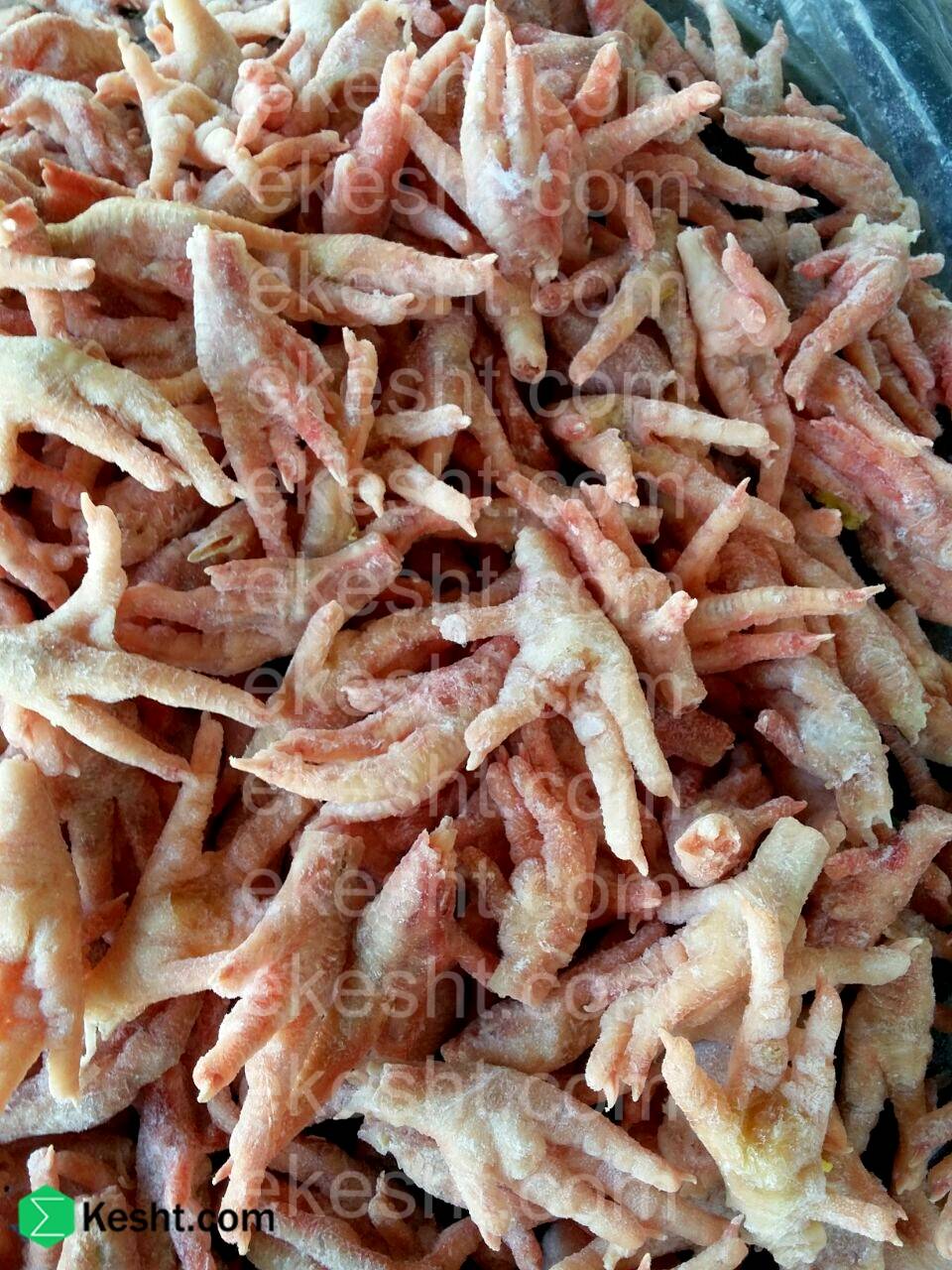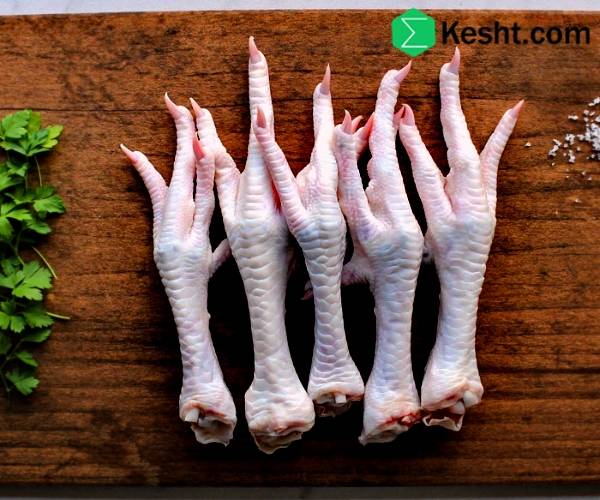Chicken Feet Collagen in the Chocolate Industry
Industrial Extraction of Collagen from Chicken Feet
The industrial extraction of collagen from chicken feet is an important process in the food and pharmaceutical industries. Collagen is a structural protein found in connective tissues, skin, and bones. Below are the general steps involved in this process:
Steps for Extracting Collagen from Chicken Feet
Collection and Preparation of Raw Materials:
Chicken feet are collected after slaughter.
Skin and excess tissue are removed from the feet.
Cleaning:
The feet are carefully washed to eliminate any dirt and bacteria.
Disinfectant solutions may be used.
Cooking:
The feet are boiled in hot water or steamed to release collagen from the connective tissues.
This stage is usually conducted at high temperatures for a specified duration.
Extraction:
After cooking, collagen is extracted using various methods such as solvent extraction or enzymatic methods.
This stage may require several rounds of extraction to achieve higher purity.
Filtration and Purification:
The collagen extract is filtered, and impurities are separated.
Methods such as microfiltration or nanofiltration are commonly employed.
Drying:
The purified collagen is dried into powder or a dry solution.
This step may involve spray drying or vacuum drying.
Packaging:
The final collagen is packaged in suitable containers for distribution and sale.
Applications
Food Industry: As a nutritional supplement and for gelatin production.
Pharmaceutical Industry: In the production of drugs and medical formulations.
Beauty Industry: In skincare and anti-aging products.
The extraction of collagen from chicken feet is a complex process that requires specialized equipment and adherence to hygiene standards.
What types of solvents are used in the extraction phase?
In the collagen extraction phase from chicken feet, various solvents and methods are used to extract collagen. Some of these solvents and methods include:
Hot Water:
One traditional method for extracting collagen is the use of hot water. Heat helps release collagen from connective tissues.
Aqueous Solvents:
Aqueous solutions with suitable pH can aid in collagen extraction. These solvents may include saline solutions or solutions with acidic or basic pH.
Alcohols:
Short-chain alcohols such as ethanol and methanol can also be used in the extraction process, although their use is generally more limited.
Enzymes:
Proteolytic enzymes like trypsin and papain are used as specific solvents to break protein bonds and release collagen.
Organic Solvents:
In some industrial methods, organic solvents such as acetone may be used for collagen separation, though these methods are usually less common.
The use of each of these solvents depends on the specific conditions and requirements of the extraction process, and typically a combination of methods is employed to optimize extraction efficiency.
Advantages and Disadvantages of Each Collagen Extraction Method
Collagen extraction from chicken feet is performed using various methods, each with its own advantages and disadvantages. Below is an analysis of these pros and cons:
Extraction with Hot Water
Advantages:
Simple and cost-effective method.
Does not require complex equipment.
The obtained collagen is usually pure and free from additives.
Disadvantages:
It may be time-consuming and require high temperatures.
Some properties of collagen may be lost due to heat.
Extraction with Aqueous Solvents
Advantages:
Easy control of pH and extraction conditions.
Can lead to high-quality collagen extraction.
Disadvantages:
May require more time.
Additional health and maintenance costs to maintain suitable pH conditions.
Extraction with Enzymes
Advantages:
The extracted collagen is usually of higher quality.
Lower temperatures are used compared to thermal methods.
Disadvantages:
High cost of enzymes.
Requires more time for enzymatic reactions to occur.
Extraction with Alcohols
Advantages:
Can effectively aid in the separation of proteins.
May help extract collagen from fatty tissues.
Disadvantages:
May alter the structure of collagen.
Safety and health issues due to the use of organic solvents.
Extraction with Organic Solvents
Advantages:
High efficiency in collagen separation.
Can lead to faster extraction.
Disadvantages:
Costly and requires specialized equipment.
Safety and environmental hazards associated with the use of organic solvents.
The choice of the appropriate extraction method depends on the specific production needs, costs, and desired quality of collagen. In many cases, a combination of methods is employed to optimize the process and the final quality of collagen.
Extraction Efficiency of Collagen by Different Methods
The efficiency of collagen extraction depends on various factors, including the type of raw material, extraction conditions, and the type of solvent or method used.
Below is a comparison of collagen extraction efficiency across different methods:
Extraction Method
Hot Water
Extraction Efficiency
Average
Description
Efficiency typically ranges from 10% to 30%, time-consuming, and may reduce collagen quality.
Extraction Method
Aqueous Solvents
Extraction Efficiency
High
Description
Efficiency typically ranges from 20% to 40%, allows control of pH and temperature.
Extraction Method
Enzymes
Extraction Efficiency
Very High
Description
Efficiency typically ranges from 30% to 50%, produces high-quality collagen at lower temperatures.
Extraction Method
Alcohols
Extraction Efficiency
Average
Description
Efficiency typically ranges from 15% to 35%, may alter the structure of collagen.
Extraction Method
Organic Solvents
Extraction Efficiency
High
Description
Efficiency typically ranges from 20% to 40%, rapid extraction but costly and poses safety risks.
Important Notes
Specific Conditions:
Extraction efficiency can vary depending on specific conditions (such as temperature, time, and solvent concentration).
Collagen Quality:
Alongside efficiency, the quality of the extracted collagen is also important. Methods like enzyme extraction typically yield higher quality collagen.
Cost and Safety:
Some methods, such as the use of organic solvents, may be costly and have safety risks.
In general, the choice of extraction method should depend on the specific production needs, costs, and desired quality of collagen.
Is Collagen Extracted from Chicken Feet a Better Option for Factories than Standard Collagen Extracted from Cow Feet?
The choice between collagen extracted from chicken feet and standard collagen extracted from cow feet depends on several factors. Below are the advantages and disadvantages of each:
Collagen Extracted from Chicken Feet
Advantages:
Lower Cost:
The production cost of collagen from chicken feet is generally lower.
Rich in Type II Collagen:
The collagen found in chicken feet is predominantly Type II, which can be beneficial for joint health.
Availability:
Chicken feet are easily accessible and can be used as a natural source of collagen.
Disadvantages:
Quality and Purity:
It may have lower quality and purity compared to bovine collagen.
Food Sensitivities:
Some individuals may be allergic to poultry-derived products.
Collagen Extracted from Cow Feet
Advantages:
High Quality:
Collagen extracted from cow feet typically has higher quality and purity.
Diverse Types of Collagen:
It can include various types of collagen (Type I and III), which are beneficial for skin and connective tissues.
Research and Standards:
Bovine collagen undergoes more scrutiny and adheres to higher standards due to its widespread use in food and pharmaceutical industries.
Disadvantages:
Higher Cost:
The production of collagen from cow feet is usually more expensive.
Dietary Restrictions:
It may not be suitable for individuals on specific diets (such as vegetarians or those allergic to beef).
Considerations for Different Types of Factories
Food and Pharmaceutical Factories:
For those seeking high-quality, standardized collagen, bovine collagen may be a better option.
Nutritional Supplement Factories:
If production cost and availability are priorities, collagen extracted from chicken feet could be a suitable choice.
Ultimately, the decision between these two types of collagen should be based on the specific needs of the target market, costs, and desired quality.
Advantages of Collagen Extracted from Chicken Feet for Chocolate Factories
Collagen extracted from chicken feet can offer specific advantages for chocolate factories. Below are some of these benefits:
Enhanced Texture Quality
Softness and Smoothness:
Collagen can help improve the texture and softness of chocolate, especially in soft and creamy varieties.
Increased Elasticity:
Collagen can enhance the elasticity of chocolate, improving the overall consumption experience.
Nutritional Properties
Protein Source:
Collagen is a high-quality protein source that can increase the nutritional value of chocolate.
Joint Health Support:
Consuming collagen can be appealing, especially for individuals looking to support joint health.
Reduction of Additives
Less Chemical Additives:
Using natural collagen can reduce the need for chemical additives, making the final product more natural.
Stability and Shelf Life
Extended Shelf Life:
Collagen can help improve the shelf life of chocolate, preventing premature spoilage.
Attracting Specific Customers
Healthy Products:
By adding collagen, factories can offer healthier products that are more appealing in the market for healthy and natural foods.
Target Market Appeal:
Chocolates containing collagen can be marketed as special products for individuals who prioritize health and beauty.
Cost Reduction
Cost-Effective Source:
Collagen extracted from chicken feet generally has lower costs compared to other sources, potentially reducing production expenses.
Collagen extracted from chicken feet can serve as a beneficial additive in the chocolate industry, improving both the quality and texture of chocolate while enhancing the nutritional value and appeal of the final product.
Does the Use of Chicken Feet Collagen Affect the Taste of Chocolate Negatively?
The use of collagen extracted from chicken feet in chocolate may affect its taste, but this impact depends on various factors. Below are some points related to this topic:
Natural Taste of Collagen
Collagen typically has a mild flavor and should not impart an undesirable taste to chocolate. However, if the collagen is improperly extracted or processed, it may give a weak or unusual flavor to the final product.
Usage Ratio
The amount of collagen used can significantly influence the taste of chocolate. A small amount of collagen usually does not negatively affect the taste, but using large quantities may alter the flavor and texture.
Other Ingredients
Collagen is often used alongside other ingredients and flavorings in chocolate. The quality and taste of these components can greatly affect the final flavor of the chocolate. If other ingredients blend well with collagen, the negative impact on taste will be minimized.
Production Methods
The production and processing methods of chocolate can also influence how collagen affects taste. Using appropriate techniques can help maintain or enhance the chocolate's flavor.
Overall, if chicken feet collagen is properly extracted and used in the right amount, it should not have a significant negative impact on the taste of chocolate. However, testing and assessing the final product's quality is essential to ensure that the taste and quality of the chocolate remain optimal
How Much Chicken Feet Collagen is Suitable for One Kilogram of Chocolate?
The amount of chicken feet collagen that can be used for one kilogram of chocolate depends on the type of product and specific production goals. However, generally, the following amounts can serve as a useful guide:
Suggested Amount of Collagen
Minimum 1% to 5%: For starters, you can use 10 to 50 grams of chicken feet collagen per kilogram of chocolate. This amount typically has a positive effect on the texture and nutritional properties of the chocolate without negatively impacting the taste.
Important Notes
Testing and Evaluation:
It is advisable to experiment with different amounts of collagen before mass production to achieve the best results in terms of texture and flavor.
Combination with Other Ingredients:
The amount of collagen should be coordinated with other chocolate ingredients to achieve the best outcome.
Nutritional Properties:
If the goal is to enhance the nutritional properties of the chocolate, you may want to consider higher amounts, but the impact on taste and texture should also be taken into account.
Ultimately, testing and evaluating the quality of the final product is essential to determine the precise amount of chicken feet collagen.
How to Add Chicken Feet Collagen to Chocolate
Adding chicken feet collagen to chocolate involves several steps. Below are the general steps for this process:
Steps to Add Chicken Feet Collagen to Chocolate
Prepare the Collagen:
Extract Collagen:
First, extract collagen from chicken feet using one of the extraction methods (hot water, enzymatic, or aqueous solvents). Ensure that the collagen is pure and free from contaminants.
Prepare the Chocolate:
Melt the Chocolate:
Melt the chocolate using a double boiler or microwave. Do this carefully to prevent the chocolate from burning.
Add the Collagen:
Mixing:
Once the chocolate is melted, gently add the collagen to the chocolate. You can use a spoon or whisk for this.
Appropriate Amount:
Add between 10 to 50 grams of collagen (depending on preference and needs) for each kilogram of chocolate.
Stirring:
Complete Mixing:
Stir the chocolate and collagen thoroughly to ensure the collagen is evenly distributed throughout the chocolate. This step is crucial to prevent clumping of the collagen.
Molding Process:
Pouring into Molds:
After thorough mixing, pour the chocolate into the desired molds.
Cooling:
Allow the chocolate to cool slowly at room temperature or in the refrigerator to set.
Packaging:
Storage: Once the chocolate has set, remove it from the molds and place it in suitable packaging.
Important Notes
Testing:
Before mass production, experiment with different amounts of collagen and other ingredients to achieve the best results in terms of texture and flavor.
Temperature:
Ensure that the temperature of the chocolate does not get too high during melting and mixing with collagen, as this may damage the properties of the collagen.
By following these steps, you can add chicken feet collagen to chocolate and benefit from its enhanced nutritional properties and texture.
Some Protein Chocolate Brands That May Use Collagen in Their Products:
RxBar
Quest Nutrition
Orgain
Halo Top
Built Bar
Please note that to confirm the use of collagen, it is advisable to check the product information for each brand or review the ingredient labels.
Amount of Collagen in These Protein Chocolates
The amount of collagen in protein chocolates varies depending on the brand and type of product. Generally, it can be stated as follows:
RxBar: Typically contains about 5-10 grams of protein per serving (depending on the flavor), which may include collagen.
Quest Nutrition: Generally contains 20-25 grams of protein per serving, with the possibility of collagen being present.
Orgain: May contain 10-20 grams of protein per serving.
Halo Top: Typically has about 5-10 grams of collagen in its protein products.
Built Bar: Usually contains between 15-20 grams of protein per serving, which may include collagen.
For more accurate information, it is recommended to check the ingredient labels of each product, as amounts may vary depending on the flavor and formulation.





